Ghost shrimp are fascinating creatures that are commonly kept as pets in aquariums. They are small, transparent, and have a unique appearance that makes them stand out from other aquatic creatures.
However, feeding ghost shrimp can be a challenge for many aquarium owners, especially those who are new to the hobby. In this article, we will discuss what to feed ghost shrimp and how to ensure they are getting the nutrition they need to thrive.
Ghost shrimp are omnivorous creatures, which means they eat both plant and animal matter. They are scavengers by nature and will eat almost anything they can find in their environment.
However, it is important to provide them with a balanced diet to ensure they are getting all the nutrients they need. In the next section, we will explore the different types of food that are suitable for ghost shrimp and how to feed them.
Contents
Understanding Ghost Shrimp
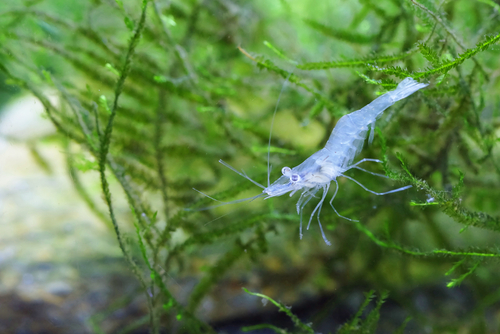
Ghost shrimp (Palaemonetes paludosus) are small, freshwater invertebrates that are popular among aquarium enthusiasts.
They are known for their unique appearance, which includes a transparent body and a distinctive pair of claws. Ghost shrimp are typically around 1.5 inches (3cm) in length and have a lifespan of up to two years.
One of the reasons that ghost shrimp are so popular is because they are relatively easy to care for. They are omnivores, which means that they will eat a variety of different foods.
In the wild, ghost shrimp primarily feed on algae, detritus, and small organisms like plankton. In captivity, they can be fed a variety of different foods, including:
- Commercial shrimp pellets
- Fresh or frozen vegetables like spinach, zucchini, and peas
- Live or frozen foods like brine shrimp, daphnia, and bloodworms
It’s important to note that ghost shrimp are scavengers, which means that they will eat almost anything that they can find.
However, it’s important to avoid overfeeding them, as this can lead to water quality issues in the aquarium. A good rule of thumb is to feed ghost shrimp once or twice a day, and to only give them as much food as they can eat in a few minutes.
In addition to their diet, it’s also important to provide ghost shrimp with a suitable environment. They prefer aquariums with plenty of hiding places and plants, as well as a substrate that they can burrow into.
Ghost shrimp are also sensitive to changes in water quality, so it’s important to maintain good water parameters and perform regular water changes.
Ghost Shrimp Habitat
Ghost shrimp are freshwater crustaceans that are native to North America. They are found in lakes, rivers, and streams and are often kept as pets in aquariums.
In order to keep your ghost shrimp healthy and happy, it is important to provide them with a suitable habitat.
1. Tank Size
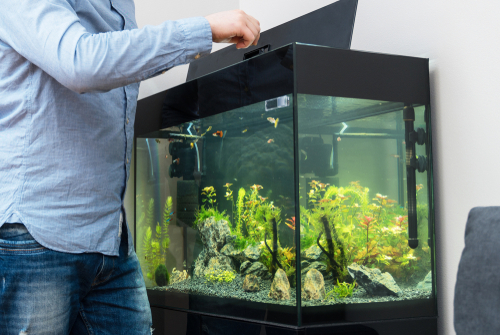
When setting up an aquarium for ghost shrimp, it is important to choose an appropriate tank size. A 10-gallon (40L) tank is a good starting point for a small group of ghost shrimp.
As they grow, they will need more space, so it is a good idea to upgrade to a larger tank if necessary.
2. Substrate
Ghost shrimp prefer a substrate that is made up of sand or small gravel. This will allow them to burrow and create hiding places. Avoid using large gravel or sharp rocks, as these can injure the shrimp.
3. Hiding Places
Ghost shrimp need hiding places in order to feel secure. You can provide them with hiding places by adding rocks, caves, or plants to the aquarium. This will also help to create a more natural-looking habitat.
4. Water Temperature and Conditions
Ghost shrimp prefer water that is between 72-82°F (22-27°C). It is important to monitor the water temperature and ensure that it stays within this range.
Ghost shrimp are also sensitive to changes in water conditions, so it is important to keep the water clean and well-maintained. Regular water changes and the use of a good quality water conditioner can help to keep the water healthy for the shrimp.
Feeding Ghost Shrimp

Ghost shrimp are omnivores, which means they eat both plant and animal matter. In the wild, they feed on algae, detritus, and other small organisms.
In captivity, they can be fed a variety of foods to ensure they get all the nutrients they need to thrive.
One of the best foods for ghost shrimp is algae wafers. These sinking pellets are specifically designed for bottom-dwelling fish and invertebrates like ghost shrimp. They are rich in protein and fiber, and contain all the essential vitamins and minerals that ghost shrimp need to stay healthy.
Another good food for ghost shrimp is brine shrimp. These small crustaceans are high in protein and are a great source of nutrition for ghost shrimp. Brine shrimp can be fed to ghost shrimp in their live or frozen form.
Bloodworms are another popular food for ghost shrimp. These small, red worms are high in protein and are a good source of nutrition for ghost shrimp. Bloodworms can be fed to ghost shrimp in their live or frozen form.
Flake foods can also be fed to ghost shrimp, but they should not be the only food they receive. Flake foods are not as nutritious as other foods, so they should be supplemented with other foods like algae wafers or brine shrimp.
Fruits and vegetables can also be fed to ghost shrimp, but they should be given in small amounts. Ghost shrimp are primarily carnivorous and do not require a lot of plant matter in their diet.
However, fruits and vegetables can provide some important vitamins and minerals that ghost shrimp need.
When it comes to feeding ghost shrimp, incorporating supplements into their diet is highly beneficial. These additions are vital components of the ghost shrimp diet, playing a significant role in their growth and overall health. Calcium, in particular, is essential for the development and maintenance of their exoskeleton.
The ghost shrimp diet is quite varied due to their omnivorous nature. Interestingly, ghost shrimp will also consume deceased tank mates. While this is a natural scavenging behavior, it’s crucial to monitor it closely. Overindulgence in this habit could lead to cannibalistic tendencies. Moreover, decaying organisms in the tank can rapidly deteriorate water quality, leading to dangerous ammonia spikes. Therefore, timely removal of any deceased tank inhabitants is essential for maintaining a healthy aquatic environment.
Observing the feeding process of ghost shrimp can be intriguing. They exhibit a unique feeding hierarchy – adult and larger ghost shrimp typically feed first, followed by the younger or smaller ones. This structured approach to feeding is not only interesting but helps maintain a balanced ecosystem in the tank.
However, it’s important to be mindful of potential disputes during feeding times, especially when offering the best food for ghost shrimp. If conflicts occur too frequently, intervening by gently agitating the water can help disperse the tension and ensure peaceful coexistence.
Ghost Shrimp Care
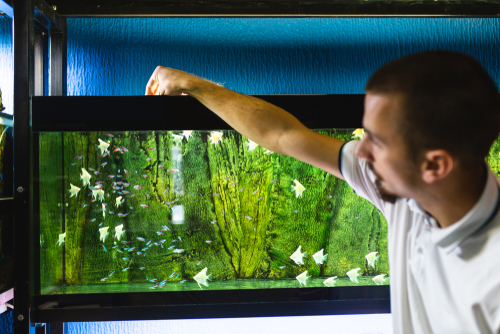
Ghost shrimp are easy to care for and make great additions to any aquarium. Proper care and feeding are essential for their health and longevity.
Temperature is an important factor to consider when caring for ghost shrimp. The ideal temperature range for ghost shrimp is between 72 and 82 degrees Fahrenheit (22-27°C). It’s important to maintain a stable temperature to prevent stress and illness.
A filter is necessary to maintain water quality in the aquarium. A sponge filter is recommended for ghost shrimp as it provides gentle filtration without creating too much water flow.
It’s important to ensure that the filter is cycled properly and doesn’t produce too much ammonia or nitrates.
Water quality is crucial for the health of ghost shrimp. It’s important to test the water regularly and maintain proper levels of ammonia, nitrates, and other chemicals.
High levels of copper can be toxic to ghost shrimp, so it’s important to avoid using copper-based medications or supplements.
Calcium is an important nutrient for ghost shrimp as it helps with molting. Providing a source of calcium, such as crushed coral or cuttlebone, can help ensure proper molting and prevent shell deformities.
Breeding Ghost Shrimp
Breeding ghost shrimp can be a rewarding experience for those interested in observing the life cycle of these fascinating creatures.
In order to successfully breed ghost shrimp, it is important to understand their reproductive process and provide them with the proper environment and nutrition.
Ghost shrimp are sexually dimorphic, meaning that males and females have physical differences that allow for easy identification.
Males have a slightly curved abdomen, while females have a more rounded abdomen. Breeding typically occurs when the female molts and releases pheromones that attract the male.
To encourage breeding, it is important to provide the shrimp with a healthy and varied diet. This can include algae, brine shrimp, bloodworms, and other small organisms.
It is also important to maintain proper water conditions, including a temperature of around 72-78°F (22-27°C) and a pH level between 7.0-8.0.
After mating, the female will carry the fertilized eggs in a specialized pouch until they hatch into larvae. It is important to provide the larvae with a suitable environment, including a low flow rate and plenty of hiding places.
Feeding the larvae a diet of microalgae and other small organisms can also help ensure their survival
Ghost Shrimp Tank Mates
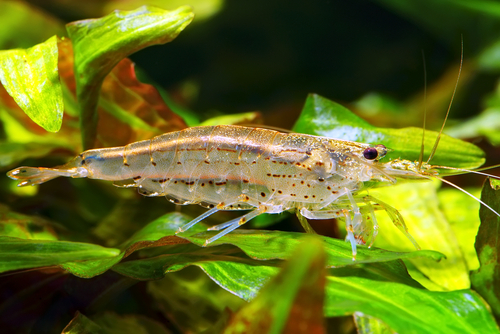
When it comes to selecting tank mates for ghost shrimp, it is important to choose peaceful species that will not harm or compete with them for resources.
Ghost shrimp are community tank inhabitants and can coexist with a variety of other aquatic creatures.
Amano shrimp and cherry shrimp are both good tank mates for ghost shrimp. These species are peaceful and will not harm or compete with ghost shrimp for food.
However, it is important to note that cherry shrimp may breed rapidly and can quickly overpopulate a tank.
Small fish can also be good tank mates for ghost shrimp. Species such as neon tetras, guppies, and platies are all peaceful and can coexist with ghost shrimp.
However, it is important to ensure that the fish are not large enough to eat the ghost shrimp. Vampire shrimp can also be compatible with ghost shrimp. They are peaceful and will not harm or compete with ghost shrimp.
However, it is important to note that vampire shrimp require a larger tank and specific water parameters.
Common Health Issues
Ghost shrimp are generally hardy and can tolerate a wide range of water conditions.
However, like any living organism, they can still fall prey to various health issues. In this section, we will discuss some of the most common health problems that ghost shrimp can experience.
1. Molt-related Issues

Molting is a natural process for ghost shrimp, during which they shed their old exoskeleton and grow a new one. However, molting can also be a stressful time for ghost shrimp, and they can become vulnerable to various issues during this period.
For example, if the water quality is poor, the shrimp may not be able to molt properly, leading to a failed molt. This can result in the shrimp becoming trapped in their old exoskeleton, which can be fatal.
2. Vorticella
Vorticella is a type of protozoan that can infect ghost shrimp. This microscopic organism can attach itself to the gills of the shrimp and cause respiratory issues.
Symptoms of a vorticella infection include labored breathing and lethargy. If left untreated, vorticella can be fatal.
3. Bacterial Infections
Bacterial infections are another common health issue that ghost shrimp can experience. These infections can be caused by a variety of bacteria, and symptoms can include discoloration, lethargy, and loss of appetite.
If you suspect that your shrimp has a bacterial infection, it’s important to isolate the affected shrimp and treat the tank with an appropriate antibiotic.
4. Dead Shrimp
Unfortunately, it’s not uncommon for ghost shrimp to die for no apparent reason.
While it’s natural for some shrimp to die over time, if you notice a sudden increase in deaths, it may be a sign of an underlying issue in your tank. Poor water quality, overcrowding, and inadequate nutrition are all factors that can contribute to shrimp deaths.
5. Fungal Diseases
Ghost shrimp are susceptible to fungal diseases, with risk factors including water quality, immune status, injuries, and diet. Symptoms of fungal infection in ghost shrimp mirror those in fish, such as lethargy, loss of appetite, and white, cotton-like patches on their body or fins.
6. New Shell
When ghost shrimp molt, they grow a new exoskeleton that is soft and vulnerable. During this time, it’s important to ensure that the shrimp have access to plenty of calcium to help harden their new shell.
Without enough calcium, the shrimp may develop a weak or malformed exoskeleton, which can lead to health issues down the line.
7. Parasitic Infestations
Parasitic infestations are another concern for ghost shrimp. Typically ectoparasites, these pests attach to the shrimp’s body or gills, causing irritation and redness, and in severe cases, altering their behavior. Common parasites include mermithids, fish lice, gill mites, and anchor worms. Prompt identification and treatment of these infestations are crucial for the health of ghost shrimp.
Ghost Shrimp as Tank Cleaners

Ghost shrimp are not only fascinating creatures to watch, but they also serve a valuable purpose in the aquarium as tank cleaners.
They are scavengers and will help keep the tank clean by eating leftover food, algae, and other debris.
Their ability to clean the tank is due to their natural behavior of constantly searching for food. They will eat almost anything they can find, including uneaten fish food, dead plant matter, and even dead fish.
Ghost shrimp are also known to eat algae, which can help prevent it from overgrowing and becoming a problem in the tank.
One of the benefits of using ghost shrimp as tank cleaners is that they are relatively easy to care for. They do not require a lot of special attention or expensive equipment.
They can thrive in a variety of water conditions and do not need a lot of space. However, it is important to note that ghost shrimp should not be relied upon as the sole method of tank cleaning.
While they are great at eating leftover food and debris, they may not be able to keep up with larger amounts of waste. It is still important to perform regular water changes and keep the tank clean.
Buying Ghost Shrimp
When it comes to buying ghost shrimp, there are a few things to keep in mind to ensure you get healthy and happy shrimp.
Firstly, it’s important to choose a reputable pet store that specializes in aquatic animals. This will increase the likelihood of finding healthy ghost shrimp that are free from diseases and parasites.
When selecting ghost shrimp, look for those that are active and swimming around. Avoid shrimp that are lethargic or appear to be hiding. Also, check for any signs of damage or discoloration on the shrimp’s body.
It’s a good idea to ask the pet store staff about the shrimp’s diet and any special care requirements. This will help you provide the best environment for your new pets and ensure they thrive in their new home.
Lastly, make sure to acclimate your ghost shrimp properly to their new environment before introducing them to your aquarium. This will help reduce stress and increase their chances of survival.
Frequently Asked Questions
What are some good food options for ghost shrimp?
Ghost shrimp are omnivores and will eat a variety of foods. Some good options include algae wafers, shrimp pellets, brine shrimp, bloodworms, and small pieces of vegetables such as zucchini or spinach.
How often should I feed my ghost shrimp?
Ghost shrimp should be fed once or twice a day. It’s important not to overfeed them as this can lead to poor water quality and health problems.
Can ghost shrimp eat vegetables?
Yes, ghost shrimp can eat vegetables. Some good options include zucchini, spinach, and cucumber. It’s important to blanch the vegetables first to make them easier for the shrimp to eat.
What is the best temperature for ghost shrimp?
The best temperature for ghost shrimp is between 72-82°F (22-27°C). They can tolerate a wider range of temperatures, but outside of this range, their growth and reproduction may be affected.
What other creatures can live with ghost shrimp?
Ghost shrimp are peaceful and can coexist with many other aquatic creatures such as snails, small fish, and other shrimp species.
However, it’s important to research the specific needs of each species before adding them to the same tank.
How long can ghost shrimp survive without food?
Ghost shrimp can survive for several days without food, but it’s important to provide them with regular meals to ensure their health and well-being.
Key Takeaways on What to Feed Ghost Shrimp
- Ghost shrimp are omnivorous creatures that require a balanced diet to thrive.
- They will eat almost anything they can find in their environment, but it is important to provide them with a variety of foods.
- Feeding ghost shrimp a diet that is rich in protein and fiber will help keep them healthy and happy.
Learn more about the feeding needs for your aquatic friends from these other posts:
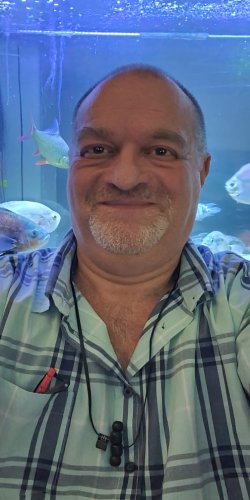
Veteran fish keeper and keen hobbyist with a serious case of MTS. My midlife crisis was the establishment of a fish room, much to my wife’s horror. Little does she know it could be worse!!


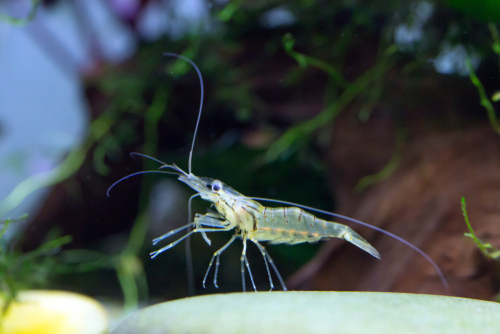
Comments (2)
Is there a rule of thumb for how many ghost shrimp per gallon? I have a 29 gallon tank and have 2 prolific baby makers. I have quickly gone from about 10 adult shrimp to around 80. My tank is fairly heavily plants and the only tank mates are 3 small catfish and a male betta. My concern is overpopulation now
Hi Ryan! Managing ghost shrimp populations can indeed be tricky, especially with prolific breeders. Generally, a good rule of thumb for ghost shrimp is about 5-10 shrimp per gallon, considering tank conditions and filtration. Your 29-gallon tank could technically support your growing shrimp population, especially since it’s heavily planted. These plants help manage waste and provide hiding spots, which is beneficial. However, keep an eye on water quality, as overpopulation can lead to deteriorating conditions even in well-maintained tanks.